The inflation conference at Political Economy Research Institute at UMass Amherst (PERI) presented mounting evidence that raising the rate of interest will only raise unemployment and weaken the bargaining power of low-wage workers and the poor that are already hit hard by the pandemic across the world. Robert Pollin joins Sharmini Peries on theAnalysis.news.
Sharmini Peries
Welcome to theAnalysis. I’m Sharmini Peries, and I will be back with Professor Bob Polin in just a few seconds.
The central bank of various developed countries, such as the G7 countries and the U.S. Federal Reserve, have responded to the rising inflation by raising interest rates. To curb it, they are using a micro-economic policy referred to as the inflation targeting, which is a policy where they try to target inflation at 2% to achieve price stability. Here is the chair of the Federal Reserve on December 16, 2022.
Jerome Powell
Before I go into the details of today’s meeting, I’d like to underscore for the American people that we understand the hardship that high inflation is causing and that we are strongly committed to bringing inflation back down to our 2% goal. Without price stability, the economy doesn’t work for anyone. In particular, without price stability, we will not achieve a sustained period of strong labor market conditions that benefit all.
Today, the FOMC [Federal Open Market Committee] raised our policy interest rate by a half percentage point. We continue to anticipate that ongoing increases will be appropriate in order to attain a stance of monetary policy that is sufficiently restrictive to return inflation to 2% over time.
Sharmini Peries
But is this really a rational economic approach to providing relief for the many who are suffering from rising prices and inflation? What can be done to curb it and achieve economic stability at the same time? What is driving inflation? Is it government spending, higher wages, the pandemic, pandemic-related supply chain issues, the war in Ukraine, or all of the above? What do effective alternative solutions look like? For whom is raising the interest rates a rational approach, or who does it benefit? Those are some of the questions raised at a very timely conference held in December of 2022 by the Political Economy Research Institute at the University of Massachusetts, Amherst.
Today I’m joined by one of the conveners of the conference, Professor Robert Pollin, who is a distinguished university professor of economics and co-director of the Political Economy Research Institute, PERI, at UMass, Amherst. Bob, thank you so much for joining me today.
Robert Pollin
Great to be on with you, Sharmini. Thank you.
Sharmini Peries
Bob, you have convened a conference with some very esteemed economists. It is safe to assume you are hoping to influence the economic policymakers at a critical juncture in this inflation bout. Why are you trying to intervene, and who are you trying to influence?
Robert Pollin
We organized the conference, myself and co-director of PERI, Gerald Epstein, in order to really focus on what really are the causes of the global inflation phenomenon and ways to tame inflation without attacking the well-being and living standards of working people and poor people. So that’s basically the whole thrust of the project.
I think it’s fair to say that we learned a lot. I think what we found at the conference was very different than what is guiding economic policy now. In a nutshell, economic policy is governed by the idea, as you said at the beginning, to get inflation down to a 2% target rate. The main way to get there is to raise interest rates that will slow the economy and raise unemployment, meaning hurt the working class and weaken their bargaining power. The idea behind weakening the bargaining power of workers is that workers are bargaining up their wages. They have too much power to bargain up wages, and therefore we have to attack worker bargaining power to bring them under the heel again.
Sharmini Peries
Bob, the paper you presented is titled Considerations on Inflation, Economic Growth and the 2 Percent Inflation Target, a paper you co-authored with Hanae Bouazza in which you declare that a policy framework known as inflation targeting has been in place by most high-income economies, such as the G7 countries since the 1990s. Now, they have set an inflation target of 2%, but you say there is no serious body of research that supports their operating assumption. Explain this for us.
Robert Pollin
Yeah, so as you said, in the 1990s, this idea that governments should organize economic policy around this idea of maintaining inflation at no more than 2%. The premise there is, well, if we do that, then everything else will take care of itself. Economies will grow better, and employment opportunities will expand. The main thing that we need to do is institute price stability as defined by a very low single-digit inflation rate of 2%.
Now, my paper with Hanae Bouazza is very modest in the sense it just tries to look at one little small point. The point is, do we actually observe that economies grow faster when they’re at low inflation, at the 2% inflation, at the target rate? And the answer is no. The answer is there was never any evidence. In fact, our paper is really an extension of work done in the 1990s by someone named Michael Bruno, who was at the time the chief economist at the World Bank. Bruno himself demonstrated in the 1990s that there was no relationship that economies actually grow faster at somewhat higher inflation rates. We basically extended Bruno’s results into the present and for the entire global economy. We focus on high-income countries and then even more on the United States per se.
We’re not saying we’re for hyperinflation. We’re not saying inflation is fine, and we don’t have to worry about it at 40%, 50%, or whatever. We are finding that rather than a 2% inflation target, economies perform better when inflation is somewhere at maybe 4% or 5%, maybe even 6-7% under some circumstances. Those percentage points actually make a huge difference. What we’re seeing now is this attack in order to get the inflation down to 2%, when what happened with this current bout of high inflation was that we had these supply shocks coming out of the COVID pandemic. In other words, there were shortages of food, shortages of oil, shortages of computer chips, and then the economies had to catch up as they came out of the COVID lockdown. On top of that, you had the war in Ukraine, which led to more food and energy shortages. So that’s the cause. So why don’t we address the issue of supply shocks? And then, on top of that, the big corporations took advantage of these supply shortages and jacked up their prices, so profits rose much faster than wages.
So that’s why you had, for example, it was just reported last week that the oil companies, two biggest U.S. oil companies, Exxon and Chevron, got $100 billion in profits last year, $100 billion in profits. Why aren’t they being called to account in terms of their price markups as opposed to attacking workers as the cause of inflation?
Sharmini Peries
Bob, one of the objectives of the lower inflation target of 2% is price stability, which is not so bad in itself, which sounds reasonable. Does it actually do that?
Robert Pollin
Well, I mean, if you want to get to a 2% inflation rate and stay there, you can, but you have to have the economy contract. You have to slow down activity. You have to see the unemployment rate go up. You can have deflation. The only issue is you also have a depression. You’ll have mass unemployment. We would love to have a world in which everybody is doing well, and there’s zero inflation, but that’s not how the world really works. So there are trade-offs. We have to understand, okay, if we want to get to 2% inflation, are we willing to sacrifice jobs and incomes? If we can have higher incomes and better job opportunities at, say, 4% inflation, maybe that should be our target as opposed to 2% inflation. Why make the entire global working class suffer and carry the burden in order to get to this 2% inflation target?
Sharmini Peries
Given the soaring cost of everything from grain to gasoline, can you explain why this operating assumption is weak and faulty?
Robert Pollin
So the idea is that whenever you have inflation, accelerating high inflation, it’s due to workers having too much bargaining power, bargaining up their wages. As I said, in fact, what caused the big inflation bout, the first one in 40 years, was what happened coming out of COVID. We reopened the economy and reopened the economy after there were all these supply breakdowns. There was a lockdown for what, a year and a half, two years? On top of that, then we had the war. So the real thing that should be done is to address those supply problems. We have supply shortages with computer chips, oil, food, and all of those things. And yes, we also had a supply shortage of workers because people died during COVID. People weren’t able to come back to work– the ones that were still alive. We lost in the U.S. about three and a half million people in the labor force. So that did create some labor shortages. The real solution there is to raise wages and encourage people to come back to work and make the conditions better.
Now, the fact is that the supply shortages are already getting restored. The supply chains are strengthening. For the last five months in the United States, inflation is already down to 2.4%. For the whole year, inflation is 7%. But for the last five months in the U.S., it’s 2.4%. Same pattern in Europe. In Spain, for example, inflation has been coming down for the last six months. So the supply issues are resolving themselves. Again, why would you want to attack workers and prevent them from getting some income gains as we come out of the COVID lockdown?
Sharmini Peries
Bob, your paper points to other economic options available to policymakers to stabilize and grow the economy without targeting unemployment to reduce inflation. Discuss some of these options that are available.
Robert Pollin
So they’re not exactly ultra out there because a lot of them have been proposed by the Biden administration. One of them is a windfall profit tax on– so, as I said, the oil companies made $100 billion in profits, record profits last year, all because they could mark up their prices because of the shortages; they took advantage of that. Why should they be benefiting as a result of the COVID lockdown? I’ve also written stuff about nationalizing the oil industry, and I’d love to talk about it, but let’s say we’re not going to do that right now. At the very least, their profit margins should be restrained because they aren’t doing anything new. They’re just benefiting from the supply shortages that came out of the COVID lockdown. So that would be one.
Similarly, the investments in building up green energy mean that we increase the alternative supplies relative to depending on oil and other fossil fuels. Now, those things work, but fair enough, they probably are not as forceful as creating mass unemployment in terms of reducing price pressure. So the point is, do we really need to push prices all the way down to the 2% target? And if we don’t have to be that aggressive in terms of reducing prices, then we can use these other policies to control inflation.
Here’s another example. One of the things that pushed up prices of food and oil is speculation on the futures market. So why not control speculation on the futures market? If you combine these alternatives, you will have a set of policies that are able to restrain inflation without attacking the well-being of working people.
Sharmini Peries
Bob, in your paper, you demonstrate that green growth policies identified by the U.S. Inflation Reduction Act passed last year are a viable option to reduce inflation. Explain how we can deal with the environmental crisis and inflation at the same time.
Robert Pollin
Well, yes, it’s not going to control inflation in the next two months. It is actually called the Inflation Reduction Act. I mean, really, it’s more about investing in building a green economy. Overall it was a good measure. It could be much, much, much better. We’ve talked about this before, but given what it is, nevertheless, the faster we transition to green energy, obviously, it addresses climate change by reducing CO2. Also, renewable energy is cheaper than fossil fuel energy; it’s half the price in terms of generating electricity. Solar and wind are half the price per kilowatt hour without any subsidies; it’s half the price of coal. That’s where we are right now. In addition, when I say a green transition, we also talk about raising energy efficiency standards, so you don’t need as much energy to keep your house warm, to turn on the lights, or to drive from point A to point B. So that also lowers all of those things meaning that we are reducing the demand for fossil fuels, and that will help reduce inflation over time.
Sharmini Peries
So how much of the inflation we are experiencing is COVID related? And how much of this inflation is due to the war in Ukraine, supply chain issues, or the stimulus packages?
Robert Pollin
Well, I think, first of all, inflation is real, so we do have to control it. And people like the progressive people, we do have to be concerned about inflation. There’s no question about it. It’s just how you do it. And then, in terms of solutions, number one, I think we need to be very clear that inflation is already coming down. It was these massive supply problems coming out of COVID and the war that really pushed up inflation. So, therefore, let’s let those things work themselves out, and then let’s stay focused on– I mean, unemployment could be lower, but it’s as low as it’s been in generations. To be at less than 4% unemployment and to push it down even lower, that’s an incredibly important goal.
Among other things, it does give workers more bargaining power. Workers should have more bargaining power. The average worker in the United States hasn’t seen a raise in 50 years in real dollars, whereas the average CEO has seen their real income increase tenfold. So that’s what we’ve had under neoliberalism. And the idea that workers shouldn’t be able to get any kind of raise is basically saying we’re going to keep running neoliberalism indefinitely. The policies of the central bank, the Fed, and similar policies in other countries are effectively saying we’re not going to run capitalism by letting workers get any benefits or any raises.
Sharmini Peries
Bob, one of the things we have to keep in mind is that in the United States, we are dealing with an election cycle every two years. Policies are often geared to pleasing those who contribute substantially to the election process. Now, give us a sense of the current policies and how it may be benefiting those that are major contributors to the election cycle. Of course, the decision-making process is geared towards them and not the ordinary person on the street.
Robert Pollin
The story coming into the next election cycle should be that, yes, we had these huge stimulus policies during COVID and that prevented a Great Depression because, between March 2020 and April 2020, unemployment went up from about 3.5% to 14% due to the COVID lockdown. It would have stayed there. We would be in a Great Depression right now had we not had the stimulus policies. The stimulus policies did contribute to putting a floor on the economy and therefore did contribute in its own way to inflation. Inflation at 3-4% is better than deflation; it is better than a depression. So I think that story needs to be told moving into the next election cycle.
Now that said, you do have this view on Wall Street that the first and foremost thing that we want is we don’t want workers to get more bargaining power. We want to keep jacking up profits unconstrained, as the oil companies have just done. The oil companies and other big corporations are certainly going to be financing politicians that are going to want to keep workers’ demands at bay.
Sharmini Peries
Thank you, Bob.
Robert Pollin
Thank you very much.
Sharmini Peries
Let me remind everyone that Bobs and other conference papers are available for your perusal at the Political Economy Research Institute at UMass Amherst.
Robert Pollin
We have a shorter one that’s in the American Prospect, a summary that’s also available. You can find it on our website site, too.
Sharmini Peries
We will be unpacking all of them by interviewing the leading authors. So please join us for this series, and thank you for joining us here on theAnalysis.
Sharmini Peries
Bienvenido a The Analysis. Soy Sharmini Peries y volveré con el profesor Bob Pollin en unos segundos.
El banco central de varios países desarrollados, como los países del G-7, y la Reserva Federal de EE. UU. han respondido a la creciente inflación mediante el aumento de las tasas de interés. Para frenarla, están utilizando una política microeconómica conocida como metas de inflación, que es una política en la que intentan llegar a una inflación del 2 % para lograr la estabilidad de precios.
Este es el presidente de la Reserva Federal el 16 de diciembre de 2022.
Jerome Powell
Antes de entrar en los detalles de la reunión de hoy, me gustaría subrayar para el pueblo estadounidense que entendemos las dificultades que está causando la alta inflación y que estamos firmemente decididos a reducir la inflación a nuestra meta del 2 %. Sin estabilidad de precios, la economía no funciona para nadie. En particular, sin estabilidad de precios, no lograremos mantener un mercado laboral fuerte que beneficie a todos.
Hoy en el FOMC [Comité Federal de Mercado Abierto], hemos subido nuestra tasa de interés clave medio punto porcentual. Continuamos anticipando que los aumentos futuros serán apropiados para lograr una postura de política monetaria que sea lo suficientemente restrictiva como para devolver la inflación al 2 % después de un tiempo.
Sharmini Peries
Pero ¿es este realmente un enfoque económico racional para proporcionar alivio a los muchos que están sufriendo a causa del aumento de los precios y la inflación? ¿Qué se puede hacer para frenarla y lograr la estabilidad económica al mismo tiempo? ¿Qué está impulsando la inflación? ¿Es el gasto público, los salarios más altos, la pandemia, los problemas de la cadena de suministro relacionados con la pandemia, la guerra en Ucrania o todo lo anterior? ¿Cuáles podrían ser soluciones alternativas efectivas? ¿Para quién es racional subir las tasas de interés o a quién beneficia?
Esas son algunas de las preguntas planteadas en una muy oportuna conferencia celebrada en diciembre de 2022 por el Instituto de Investigaciones de Economía Política en la Universidad de Massachusetts, Amherst. Hoy me acompaña uno de los organizadores de la conferencia, el profesor Robert Pollin, que es un distinguido profesor universitario de Economía y codirector del Instituto de Investigación de Economía Política, PERI, en UMass, Amherst. Bob, muchas gracias por acompañarme hoy.
Robert Pollin
Es genial estar contigo, Sharmini. Gracias.
Sharmini Peries
Bob, has organizado una conferencia con algunos economistas muy estimados. Podemos suponer que esperas influir en los responsables de la política económica en un momento crítico en este periodo inflacionario. ¿Por qué estás tratando de intervenir y a quién estás tratando de influir?
Robert Pollin
Organizamos la conferencia, el codirector de PERI, Jerry Epstein, y yo, para enfocarnos en cuáles son realmente las causas del fenómeno de la inflación global y las formas de controlar la inflación. Controlar la inflación sin atacar el bienestar y el nivel de vida de los trabajadores, las clases pobres.
Así que eso es básicamente la base del proyecto. Y creo que es justo decir que aprendimos mucho. Creo que lo que hallamos en la conferencia fue muy diferente de lo que está guiando la política económica ahora. En pocas palabras, la política económica se rige por la idea, como has dicho al principio, de reducir la inflación a una tasa del 2 %. Y la principal forma de lograrlo es subir las tasas de interés. Eso ralentizará la economía, aumentará el desempleo, y como consecuencia dañará a la clase trabajadora y debilitará su poder de negociación. Y la idea detrás de debilitar el poder de negociación de los trabajadores es porque los trabajadores están negociando para subir sus salarios, tienen demasiado poder para negociar salarios y, por lo tanto, tenemos que atacar el poder de negociación de los trabajadores para volver a tenerlos bajo su bota.
Sharmini Peries
Bob, el artículo que presentaste se titula Considerations on Inflation, Economic Growth and 2% Inflation Target. Es un artículo que escribiste conjuntamente con Hanae Bouazza y en el que declaras que la mayoría de las economías de ingresos altos han establecido un marco de política conocido como metas de inflación, como los países del G-7, desde la década de 1990. Han fijado una meta de inflación del 2 %. Pero dices que no hay un corpus de investigación serio que respalde su suposición operativa. Explícanos esto.
Robert Pollin
Sí, como has dicho, en la década de 1990, existía esta idea de que los Gobiernos deben organizar la política económica en torno a esta premisa de mantener la inflación por debajo del 2 %, y la premisa es, bueno, si hacemos eso, todo lo demás se arreglará solo, las economías crecerán mejor, las oportunidades de empleo se ampliarán. Y lo principal que tenemos que hacer es establecer la estabilidad de precios, definida por una tasa de inflación muy baja de un solo dígito del 2 %.
Ahora, mi estudio con Hanae Bouazza es muy limitado en cierto sentido. Solo trata de analizar un pequeño punto. Y el punto es: ¿realmente observamos que las economías crecen más rápido en un contexto de baja inflación, con una inflación del 2 % como objetivo? Y la respuesta es no. La respuesta es que nunca hubo pruebas. De hecho, nuestro documento es realmente una especie de extensión del trabajo realizado en la década de 1990 por alguien llamado Michael Bruno, que era en ese momento el economista jefe del Banco Mundial. Y el propio Bruno demostró en los 90 que no había relación, que las economías en realidad crecen más rápido a tasas de inflación algo más altas.
Básicamente ampliamos los resultados de Bruno en el presente y para toda la economía global. Luego, nos enfocamos en los países de altos ingresos y luego aún más en los Estados Unidos concretamente. No decimos que estamos a favor de la hiperinflación.
No decimos que está bien que haya inflación, que no tenemos que preocuparnos si está al 40 %, 50 %, lo que sea. Pero hemos hallado que, en lugar de una meta de inflación del 2 %, las economías funcionan mejor cuando la inflación está en alrededor del 4-5 %, quizá incluso 6-7 % en algunas circunstancias, y que esos puntos porcentuales realmente suponen una gran diferencia. Porque lo que estamos viendo ahora es este ataque para bajar la inflación al 2 %, cuando lo que sucedió con este periodo actual de alta inflación fue que tuvimos estas reducciones de la oferta derivadas de la pandemia. En otras palabras, había escasez de alimentos, escasez de petróleo, escasez de chips de ordenador, y las economías tuvieron que recuperar lo perdido cuando salieron del confinamiento. Además de eso, estaba la guerra en Ucrania, que condujo a más escasez de alimentos y energía.
Entonces, esa es la causa. ¿Por qué no abordamos el tema de las reducciones de la oferta? Y luego, encima de eso, las grandes corporaciones se aprovecharon de esta escasez de suministro y subieron sus precios, y como consecuencia las ganancias aumentaron mucho más rápido que los salarios. Así que por eso vimos… Por ejemplo, se informó la semana pasada de que las dos mayores petroleras estadounidenses, Exxon y Chevron, obtuvieron 100 mil millones de dólares en ganancias el año pasado, 100 mil millones en ganancias. ¿Por qué no se les pide responsabilidad con respecto a sus márgenes de precios en lugar de atacar a los trabajadores como la causa de la inflación?
Sharmini Peries
Bob, uno de los objetivos de una meta de inflación del 2 % es la estabilidad de precios, lo cual no es tan malo en sí mismo, parece razonable. ¿Realmente hace eso?
Robert Pollin
Bueno, quiero decir, si quieres llegar a una tasa de inflación del 2 % y permanecer allí, puedes hacerlo. Pero la economía se va a contraer, se ralentizará la actividad económica, subirá la tasa de desempleo. Puede resultar en deflación. El único problema es que también tienes una depresión. Tendrás desempleo generalizado. Nos encantaría tener un mundo en el que a todos les va bien y no hay inflación. Pero así no es como funciona realmente el mundo. Hay un coste.
Entonces, tenemos que entender: está bien, si queremos llegar al 2 % de inflación, ¿estamos dispuestos a sacrificar empleos e ingresos? Si podemos tener mayores ingresos y más y mejores oportunidades de trabajo con, digamos, una inflación del 4 %, quizá ese debería ser nuestro objetivo en lugar de una inflación del 2 %. ¿Por qué hacer sufrir a toda la clase obrera mundial, que lleven la carga, con el fin de llegar a este objetivo de inflación del 2 %?
Sharmini Peries
Dado el alto coste de todo, desde los cereales hasta la gasolina, ¿puedes explicar por qué esta suposición operativa es débil y fallida?
Robert Pollin
Bien, la idea es que siempre que hay inflación, creciente alta inflación, se debe a que los trabajadores tienen demasiado poder de negociación, negociando sus salarios. Como he dicho, de hecho, lo que causó la gran inflación, la primera en 40 años, fue lo que pasó saliendo del COVID: reabrimos la economía, y reabrimos la economía después de que hubo todas estas alteraciones de suministro, hubo un confinamiento… ¿por cuánto, un año y medio, dos años? Y encima de eso, luego tuvimos la guerra.
Entonces, lo que se debe hacer es abordar esos problemas de suministro, el hecho de que tenemos escasez de suministros con chips de ordenador y petróleo y alimentos, todas esas cosas. Y sí, también tuvimos escasez de oferta de trabajadores por las muertes causadas por el COVID y la gente que no pudo volver a trabajar. Los que todavía estaban vivos. El mercado laboral en los EE. UU. perdió alrededor de tres millones y medio de personas. Así que eso creó cierta escasez de mano de obra. La verdadera solución es subir los salarios y alentar a las personas a volver al trabajo y mejorar las condiciones.
Ahora bien, el hecho es que la escasez de suministro ya se está restableciendo. Las cadenas de suministro se están fortaleciendo. Durante los últimos cinco meses en los Estados Unidos, la inflación ya ha bajado al 2,4 %. Para todo el año, la inflación es del 7 %, pero durante los últimos cinco meses en los EE. UU., es del 2,4 %. La misma tendencia en Europa. En España, por ejemplo, la inflación ha estado bajando durante los últimos seis meses. Así que los problemas de suministro se están resolviendo solos. Y de nuevo, ¿por qué querrías atacar a los trabajadores e impedir que obtengan algún aumento de ingresos cuando estamos saliendo del confinamiento?
Sharmini Peries
Bob, tu documento señala otras opciones económicas disponibles para los responsables políticos para estabilizar y hacer crecer la economía sin dañar el empleo, para reducir la inflación. Háblanos de algunas de estas opciones que están disponibles.
Robert Pollin
No son exactamente ultrarradicales, porque muchas de ellas han sido propuestas por la administración Biden.
Una de ellas es un impuesto a las ganancias extraordinarias. Como he dicho, las compañías petroleras obtuvieron 100 mil millones de dólares en ganancias, ganancias récord el año pasado, y todo porque podían aumentar sus precios debido a la escasez. Se aprovecharon de eso. ¿Por qué deberían beneficiarse como resultado del confinamiento del COVID?
También he escrito sobre la nacionalización de la industria petrolera y me encantaría hablar de ello, pero digamos que no vamos a hacer eso ahora. Por lo menos, deberían restringirse sus márgenes de beneficio, porque no están haciendo nada nuevo, solo se están beneficiando de la escasez de suministros causada por el confinamiento. Así que ese sería uno.
Del mismo modo, las inversiones en la expansión de energías verdes significan que aumentamos la oferta de alternativas frente a la dependencia del petróleo y otros combustibles fósiles. Ahora, esas cosas funcionan, pero de acuerdo, probablemente no son tan efectivas como una alta tasa de desempleo para reducir la presión sobre los precios.
Entonces, lo que digo es: ¿realmente necesitamos bajar los precios hasta la meta del 2 %? Y si no tenemos que ser tan agresivos en términos de reducción de precios, quiere decir que podemos usar estas otras políticas para controlar la inflación.
Este es otro ejemplo. Una de las cosas que hizo subir los precios de los alimentos y el petróleo es la especulación en el mercado de futuros. Entonces, ¿por qué no controlar la especulación en el mercado de futuros?
Si usas una combinación de estas alternativas, tendrás un conjunto de políticas que son capaces de contener la inflación sin atentar contra el bienestar de los trabajadores.
Sharmini Peries
Bien, Bob, en tus artículos demuestras que las políticas de crecimiento verde identificadas en la Ley de Reducción de la Inflación de EE. UU. aprobada el año pasado son una opción viable para reducir la inflación. Explica cómo podemos paliar la crisis ambiental y la inflación al mismo tiempo.
Robert Pollin
Bueno, sí, no va a controlar la inflación en los próximos dos meses. Se llama Ley de Reducción de la Inflación. Quiero decir, realmente se trata más de invertir en construir una economía verde. En términos generales, fue una buena medida. Podría ser mucho mejor. Hemos hablado de esto antes.
Pero bueno, es lo que es, y cuanto más rápido hagamos la transición a la energía verde, obviamente palia el cambio climático al reducir el CO2, pero también la energía renovable es más barata que la energía de combustibles fósiles, la mitad del precio, para generar electricidad en este momento. La energía solar y eólica cuestan la mitad por kilovatio hora, sin subsidios, que el carbón. Ahí es donde estamos ahora.
Además, cuando digo “una transición verde”, también hablamos de mejorar los estándares de eficiencia energética. Así que no necesitarías tanta energía para mantener tu casa caliente o encender las luces o conducir del punto A al punto B. Entonces, eso también baja… Todas esas cosas significan que estamos reduciendo la demanda de combustibles fósiles y eso ayudará a reducir la inflación con el tiempo.
Sharmini Peries
Entonces, ¿qué porcentaje de la inflación que estamos experimentando está relacionada con COVID y cuánto se debe a la guerra en Ucrania o problemas de la cadena de suministro o los paquetes de estímulo?
Robert Pollin
Bueno, creo que en primer lugar, la inflación es real, así que tenemos que controlarla. Y a las personas progresistas debería preocuparnos la inflación. No hay duda al respecto. Así es como lo haces.
Y luego, en términos de soluciones, número uno, creo que debemos tener muy claro que la inflación ya está bajando. Fueron estos problemas generalizados de suministro después del COVID y la guerra lo que realmente hizo subir la inflación.
Por tanto, dejemos que esas cosas se resuelvan solas, y luego centrémonos en… Quiero decir, el desempleo podría ser más bajo, pero es el más bajo que hemos tenido desde hace generaciones. Así que tener un desempleo de menos del 4 % y reducirlo aún más es una meta increíblemente importante. Entre otras cosas, da a los trabajadores más poder de negociación. Los trabajadores deberían tener más poder de negociación. El trabajador promedio en los Estados Unidos no ha visto un aumento salarial en 50 años en dólares reales, mientras que el director promedio ha visto multiplicarse por diez sus ingresos reales. Eso es lo que nos ha dado el neoliberalismo. Y la idea de que los trabajadores no deberían poder recibir ningún tipo de aumento básicamente significa que vamos a seguir aplicando el neoliberalismo indefinidamente. Y las políticas del banco central, la Fed, y políticas similares en otros países están diciendo efectivamente: no queremos un tipo de capitalismo en el que los trabajadores obtengan cualquier beneficio, cualquier aumento.
Sharmini Peries
Bob, una de las cosas que debemos tener en cuenta es que en Estados Unidos tenemos un ciclo electoral cada dos años. Por lo tanto, las políticas a menudo están orientadas a complacer a quienes contribuyen sustancialmente al proceso electoral. Danos una idea de las políticas actuales y cómo pueden estar beneficiando a aquellos que son los principales contribuyentes al ciclo electoral. Y por supuesto, el proceso de toma de decisiones los favorece a ellos y no a la persona común en la calle.
Robert Pollin
La historia, entrando en el próximo ciclo electoral, debería ser que, sí, tuvimos estas enormes políticas de estímulo durante el COVID y eso evitó una gran depresión, porque entre marzo de 2020 y abril de 2020, el desempleo aumentó de alrededor del 3,6 % al 14 % debido al confinamiento. Se habría quedado allí, estaríamos en una gran depresión en este momento, si no hubiéramos tenido las políticas de estímulo. Y las políticas de estímulo sí contribuyeron a frenar la caída de la economía y contribuyeron a su manera a la inflación. Una inflación al 3-4 % es mejor que la deflación, es mejor que la depresión. Así que creo que es necesario contar esa historia de cara al próximo ciclo electoral.
Dicho esto, existe una opinión en Wall Street de que lo primero y más importante que debemos hacer es evitar que los trabajadores tengan más poder de negociación. Queremos seguir aumentando las ganancias sin restricciones, como acaban de hacer las petroleras. Las compañías petroleras y otras grandes corporaciones ciertamente van a financiar a los políticos para mantener a raya las demandas de los trabajadores.
Sharmini Peries
Gracias, Bob.
Robert Pollin
Muchas gracias.
Sharmini Peries
Permítanme recordarles a todos que los documentos de la conferencia de Bob y otros están disponibles para su lectura en el Instituto de Investigación de Economía Política en UMass Amherst.
Robert Pollin
Y tenemos uno más corto que está en el American Prospect, un resumen, que también está disponible. También pueden encontrarlo en nuestro sitio web.
Sharmini Peries
Los analizaremos entrevistando a los principales autores. Así que por favor únanse a nosotros para esta serie y gracias por acompañarnos aquí en The Analysis.
Podcast: Play in new window | Download | Embed
Subscribe Apple Podcasts | Spotify | Android | iHeartRadio | Blubrry | TuneIn | Deezer | RSS
Never miss another story
Subscribe to theAnalysis.news – Newsletter
“Robert Pollin (born September 29, 1950) is an American economist and self-described socialist. He is a professor of economics at the University of Massachusetts Amherst and founding co-director of its Political Economy Research Institute (PERI).”
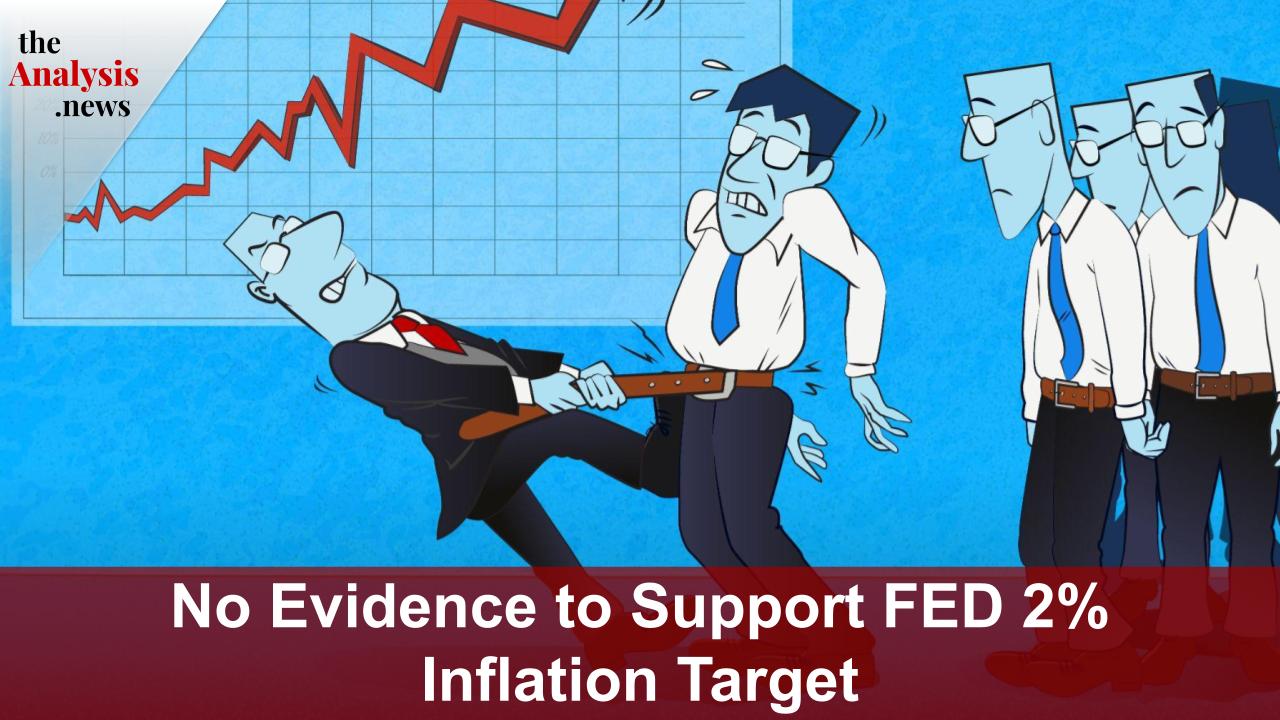





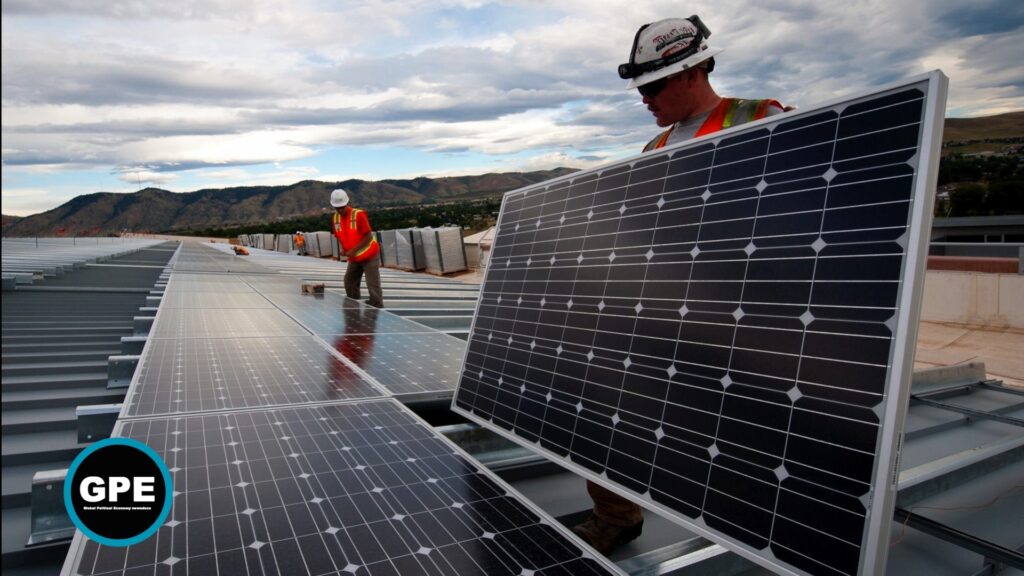

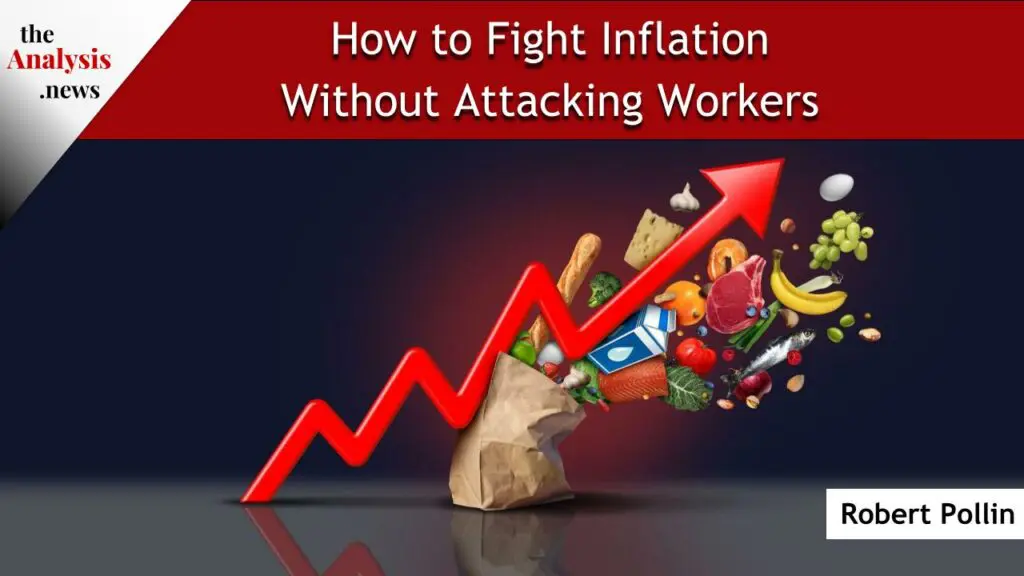
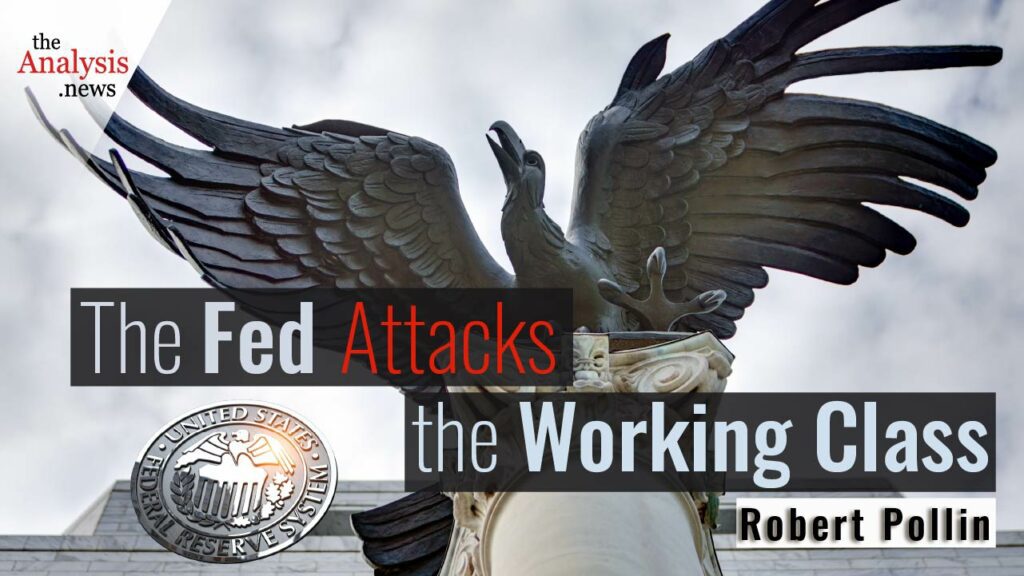
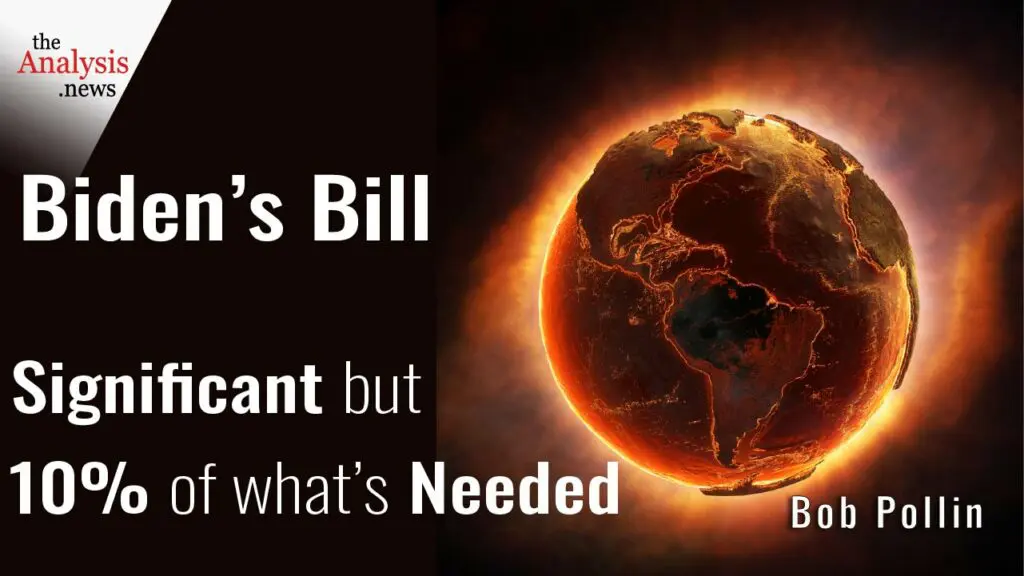
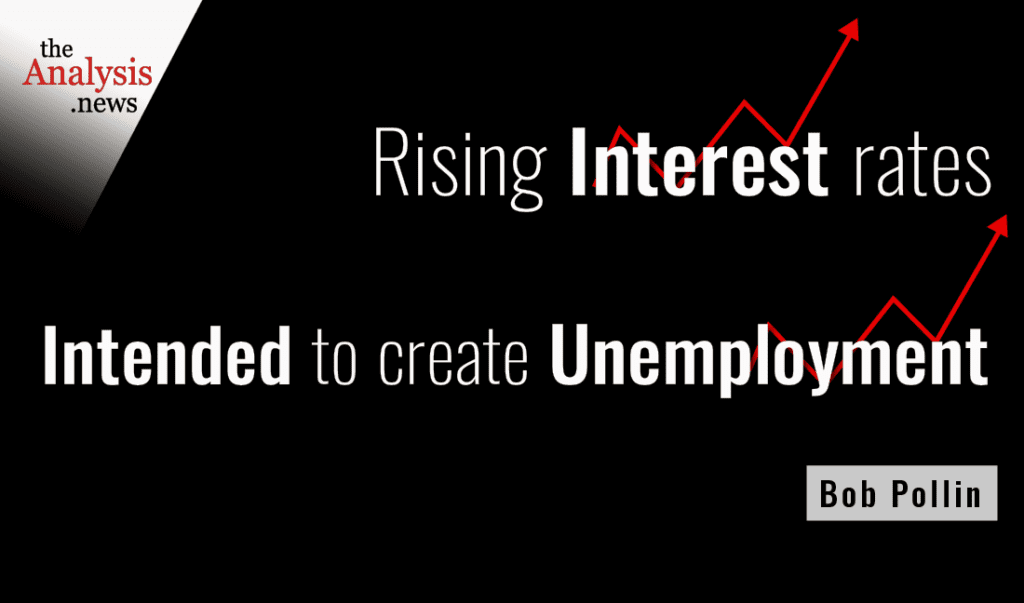
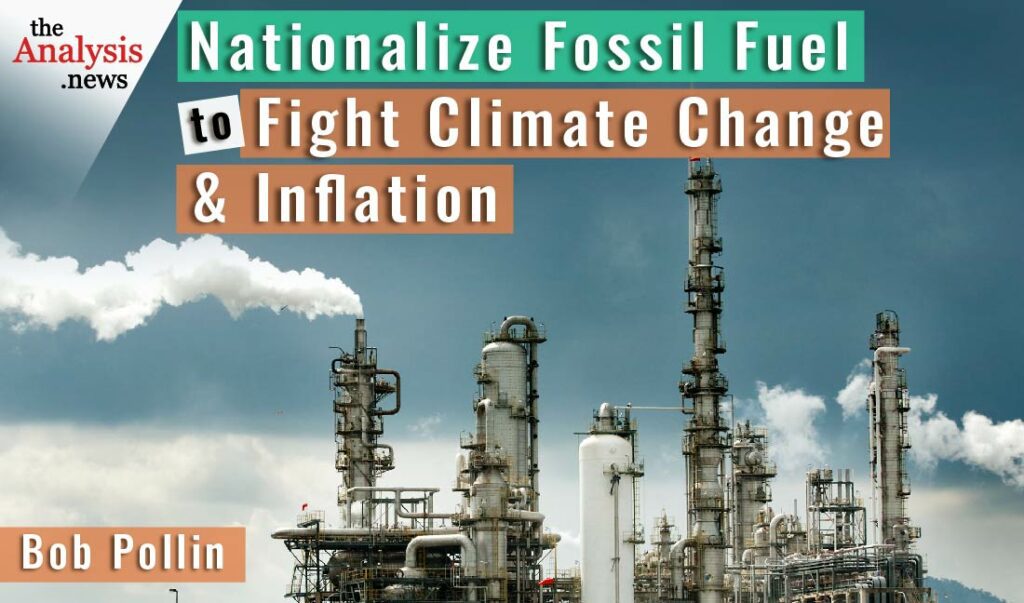
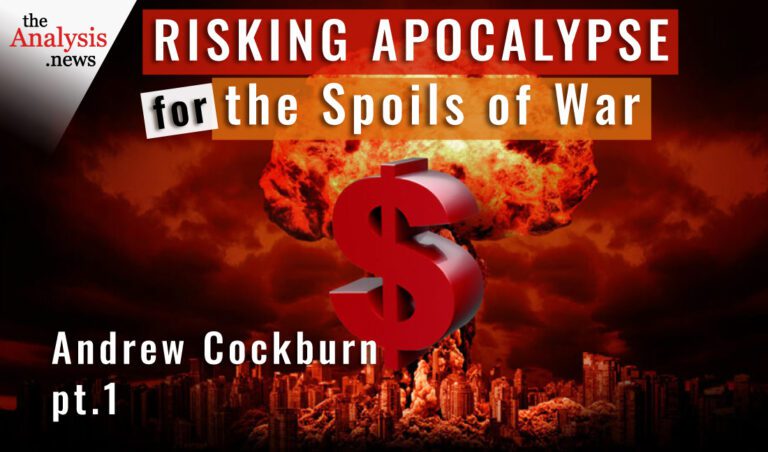



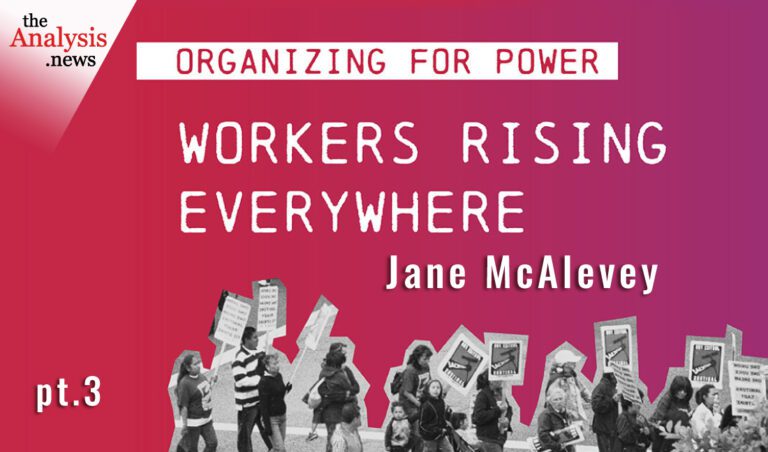
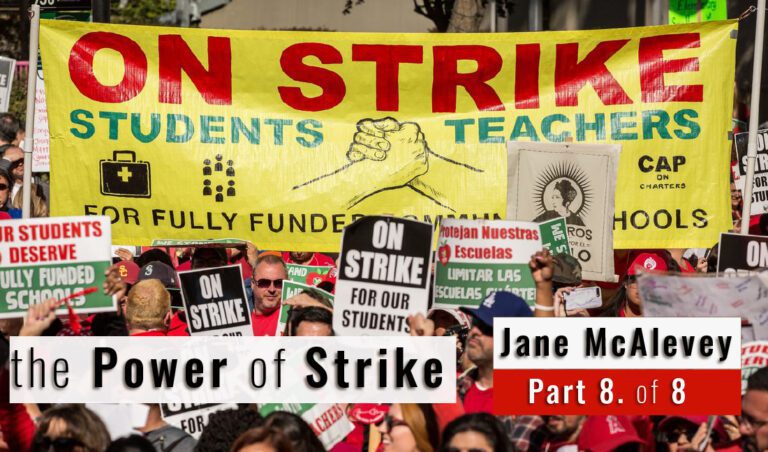
This is now an establishment view. El erian, Rogoff, and mainstream are ALL on board. But the Analysis had it earliest!
the essential upshot is: “let’s keep inflation higher than before to keep the expansion going while we’re at pre-world-war-3 stage”.
Pollin allows his analysis to be incomplete. I miss Leo Panitch, who Analysis News used to interview as well, at times like these. Panitch, Hudson or Wolff would immediately explain that job loss is the intended result of raising interest rates and that the job losses destabilize workers, lowering wage bargaining aggressiveness, and RAISING PROFITS as a result. The lower wages after a period of sharp unemployment are good for the employers! Mr. Pollin seems to be telling the financial elite that they should feel bad about the unemployment when unemployment is the POINT OF THE POLICY that they have mandated through their representative in the Fed, Powell. It’s not a complex mechanism. Eesh.